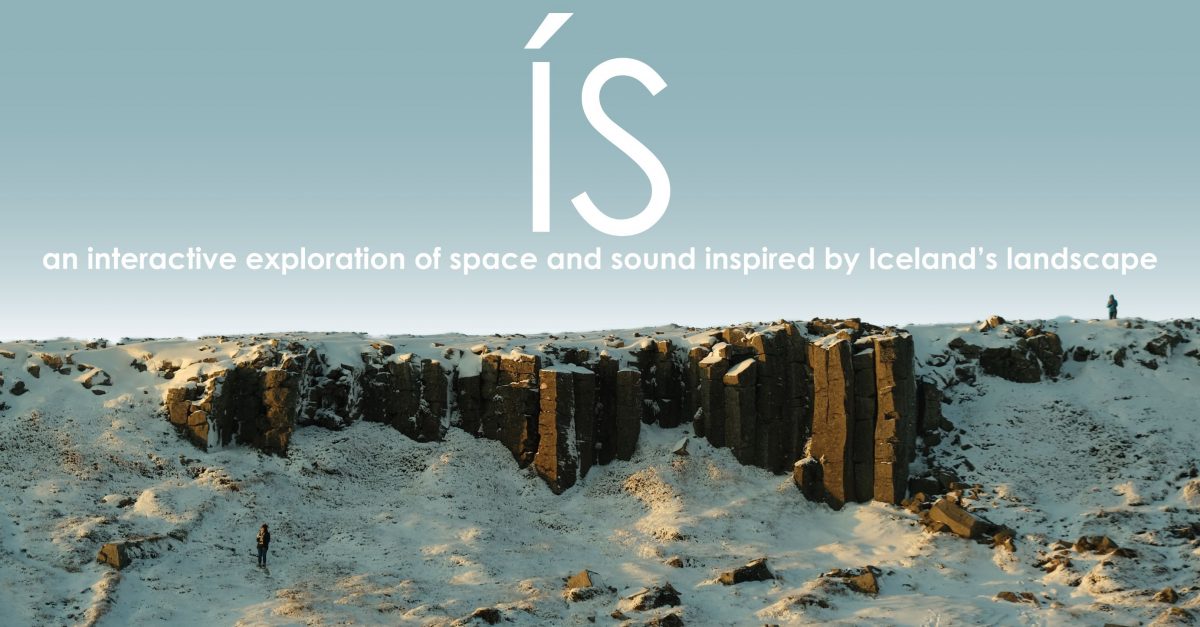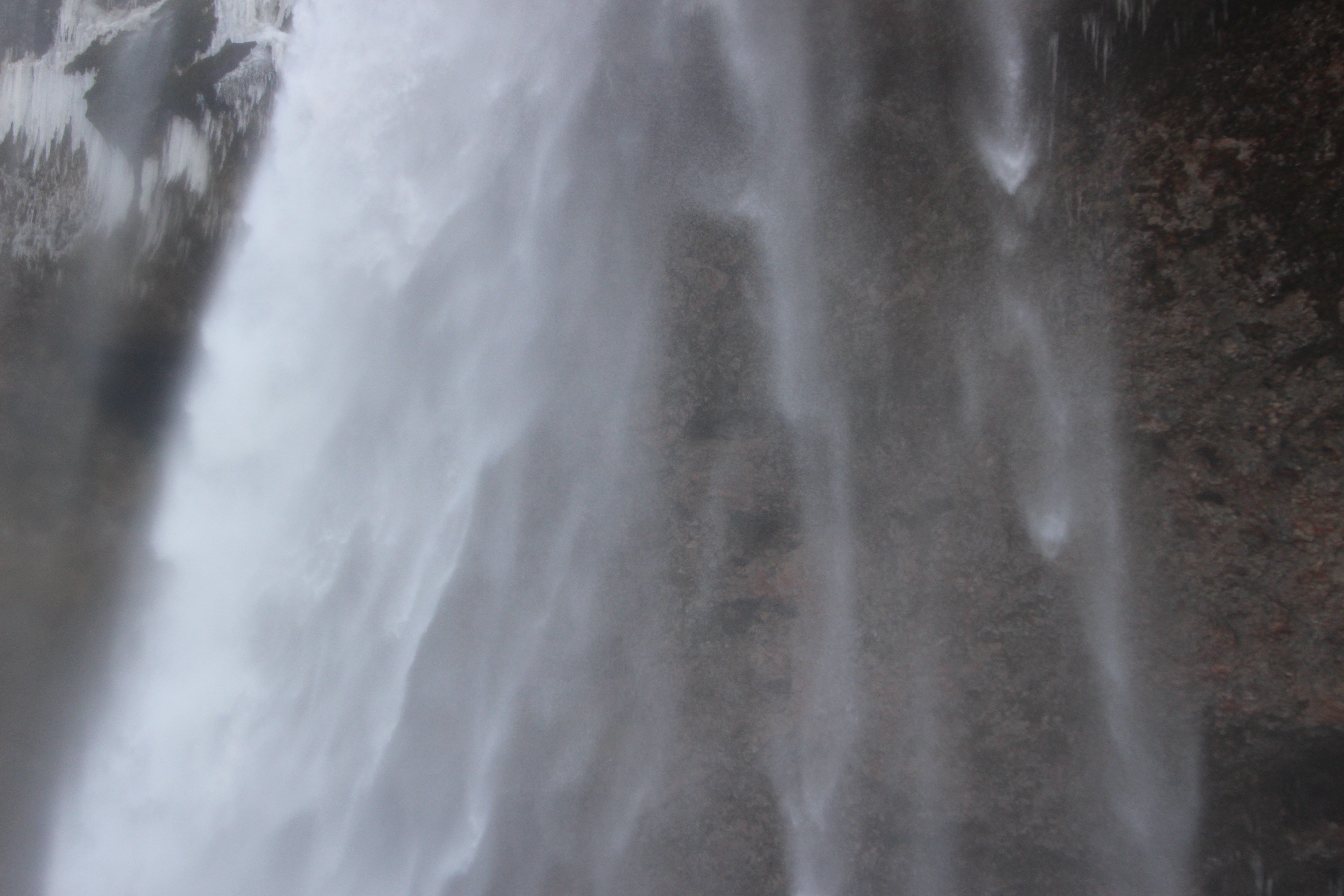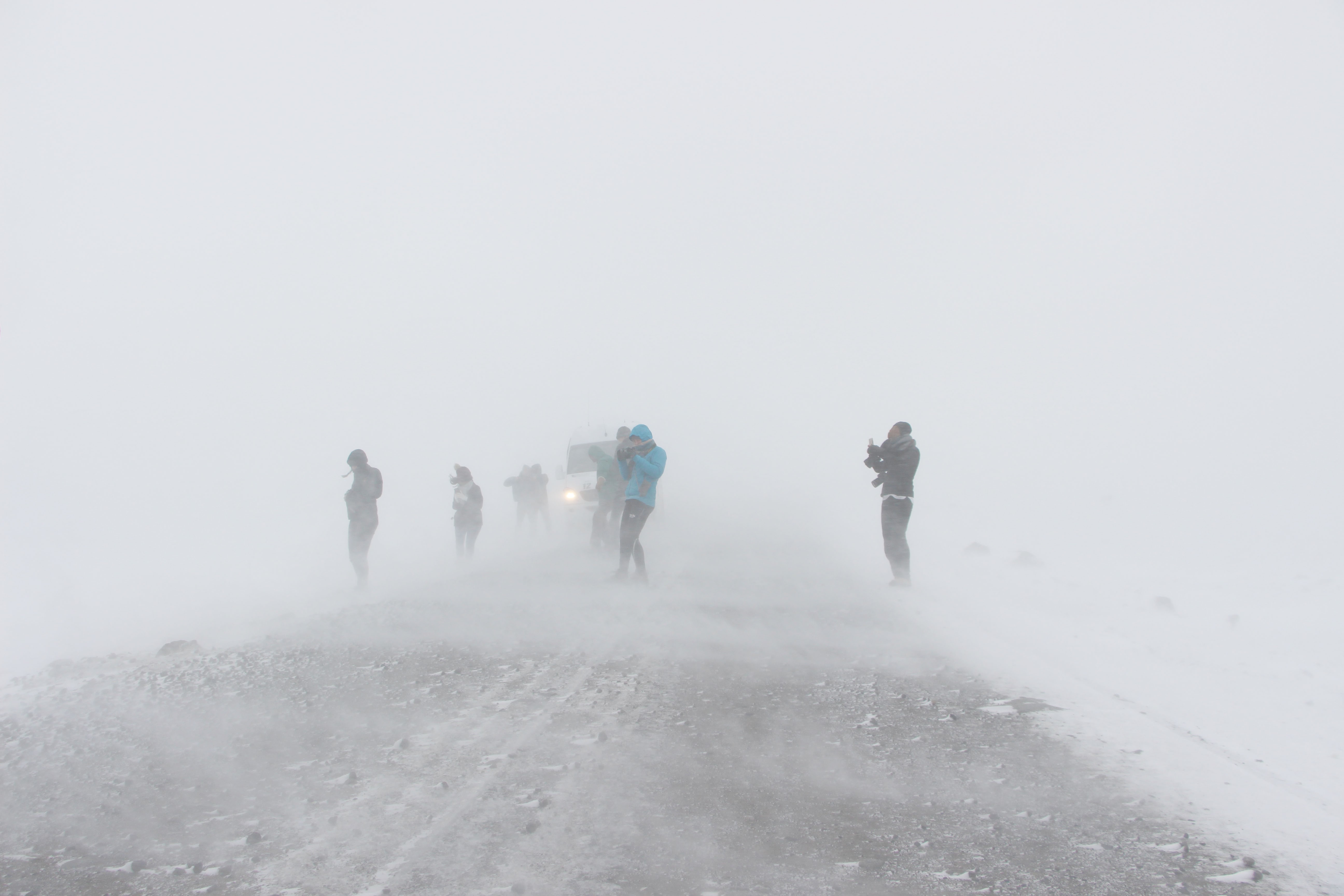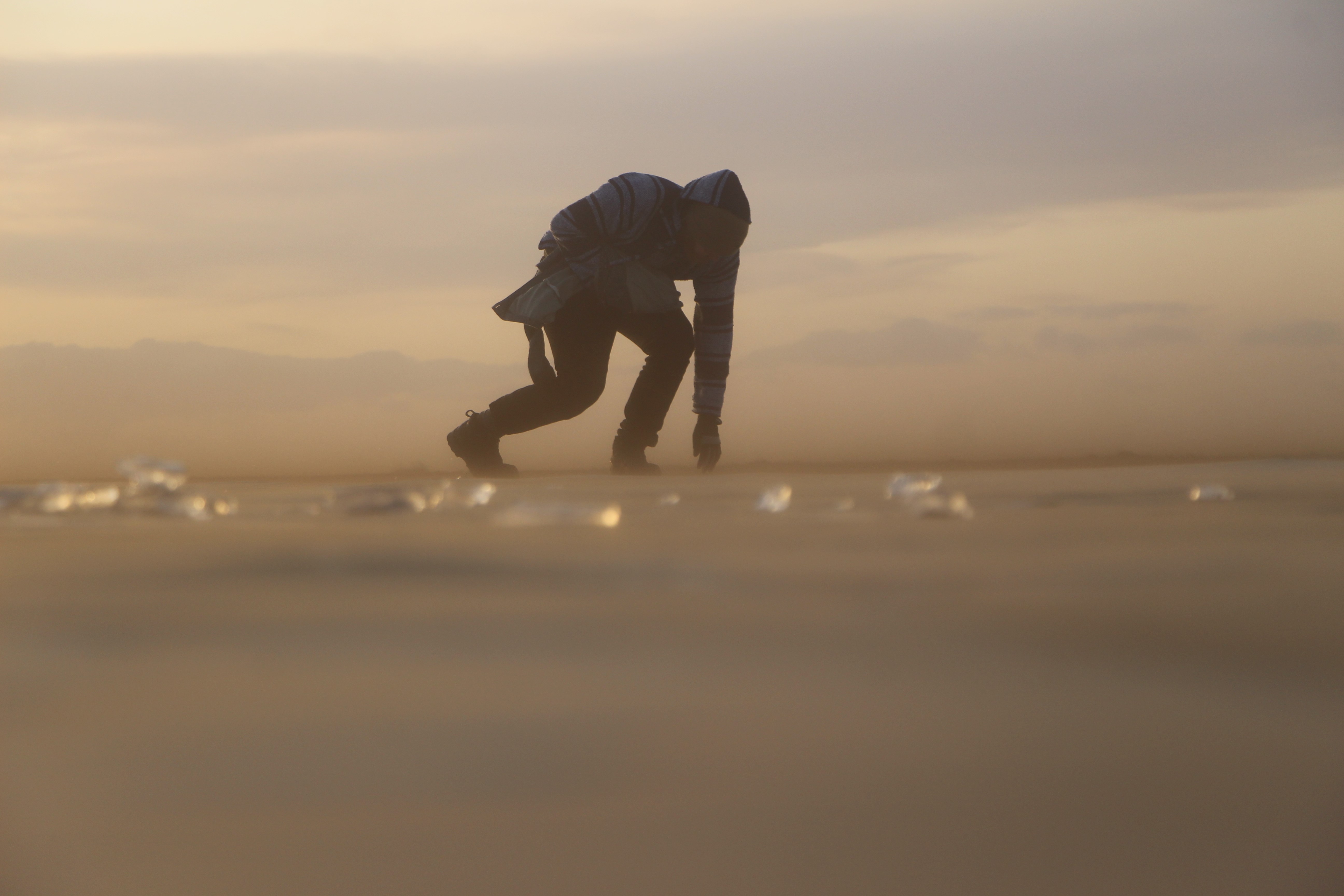
The acoustics of Iceland
Ís, an interactive installation, the result of a collaboration between the University of Manitoba's Faculty of Architecture and Desautels Faculty of Music, was on display Jan. 29th - Feb. 5th
Wind and snow whipping across fjords. A flood of water crashing down from a waterfall surrounded by moss and lush greenery. A van parked precariously on a roadside in the middle of a blinding snowstorm. The steam from hot springs evaporating into the icy air. Boots crunching and scraping along the ice on a black sand beach. A fishing boat navigating ice floes as it chugs into harbour. This is Iceland. In our minds, we can picture how these scenarios might look, but how do they sound?
The Desautels Faculty of Music’s composition master’s students and the University of Manitoba’s Faculty of Architecture graduate studio class set out to discover the answer during their trip to Iceland in October 2019, where they recorded the sounds of Iceland. Their findings took the form of an interactive installation, Ís, which ran from January 29th through February 5th in the UM School of Art’s Student Gallery on the first floor of the Taché Arts Complex.
Sound and architecture
The trip was coordinated by Örjan Sandred, a professor of composition in the Desautels Faculty of Music, and Herbert Enns, a professor of architecture, who wanted to connect their students through topics that touch on both music and architecture. The relationship between the two disciplines is a natural one, though it might not be obvious to those of us on the outside.
“Many composers have actively explored the relationship between architecture and music – an obvious example being Iannis Xenakis, who was both a composer and an architect,” says Sandred.
“All music is dependent on room acoustics, and in electroacoustic music the acoustics sound spatialization through loudspeaker systems and the interaction with spaces is a central topic – just as a brief example of how we connect,” he adds.
“Music and architecture go hand-in-hand, and there are many overlaps between the two,” agrees Jonathan Bailes, a master of architecture student who went on the trip.
“Architecture and sound inspire one another, and the trip was an exciting collaboration in that sense, because we were able to share our specific interests during the travels,” he says.
“[The trip] was an opportunity to do something outside of a traditionally ‘musical’ context,” says Ross Bugden, a fourth-year undergraduate composition student who went on the trip.
“In universities, music tends to be centered around European-classical instrumentation and notational practices, so developing an interactive installation based on field recordings let me think about the organization in a whole new way,” he says.
Aside from collecting sounds, making acoustic measurements, and explorations of generating sounds by interacting with the environment, the students were able to amplify each other’s creativity, and build on ideas outside of their respective disciplines.
“It was a nice opportunity to meet and get to know people from another program in the university, something that doesn’t happen very often,” says Lucas Druet, a master of architecture student on the trip.
“It has been great getting to see and learn from the creativity, passion, and talent of the music students,” he adds.
Traveling through sound, and recording in harsh climates
Much of the trip took place in northwestern Iceland in the Westfjords, a peninsular region known for its craggy fjords, steep hills, black sand beaches, and its impassibility and isolation during the winter months.
“There’s no way to really prepare yourself for how barren it is,” says Bugden.
“In places like Manitoba, we take the omnipresence of life for granted. In Iceland, there are places where almost nothing lives or grows. It’s just naked earth and water,” he adds.
“It’s kind of unsettling and beautiful at the same time.”
The recording sites for the trip were not planned in advance, and the day unfolded according to the discoveries the students made.
In preparation for the trip, the composition students bought a hydrophone, an underwater microphone that they used in Iceland’s many watery environments.
“We threw it into every body of water we could find. It got nipped by ducks a few times,” says Bugden.
Anticipating the wind and harsh environs, composition master’s student Jesse Krause made windscreens for the microphones.
“It saved our recordings a number of times. One of us often had the job of standing between the mic and the wind, taking the brunt of the cold with our bodies,” notes Bugden. Those experiences at least prepared them for another moment during the trip, when all of the students took a dip in a hot spring pool, and then ran into the ocean.
“It felt a bit like jumping into a pool of needles, but it was a really fun moment,” admits Bugden.
“Among the sounds we explored were the violent torrent of wind and snow as you step out of the quiet, still air of the van; the sublime descent into cramped, humid, and very quiet caves; the hum of a motor and creaks of the van; and the gentle but active daily life of the Reykjavik Harbour,” Druet says.
“You can definitely guess what a place will sound like by looking at it, but you can’t be sure until you go there and listen,” says Bugden.
“The moments when a space contradicts your expectations are really rewarding,” he says.
While traveling from place to place, their Icelandic driver Gunnar Gudjonsson would jump out of the van to scout potential recording locations. At one point, in Snæfellsjökull, Gudjonsson exited the van, only to disappear into a hole next to the road.
“He emerged after a somewhat concerning five minutes and told us to follow him,” says Bugden.
The hole turned out to be a volcanic tube. Also known as lava chutes, these long, cave-like geographic features are formed as a large amount of lava flows from a volcano during eruption. The lava at the surface of the flow hardens in the comparatively cool air, and eventually leaves a hollowed out, underground passage.
“We walked deeper and deeper underground for a long time, then stopped and turned off our headlamps,” says Bugden.
“It was completely black and silent. In a trip saturated with music and light, this moment stands out in my memory,” he says.
Some of the recordings the students made were sadly archival in their purpose: the sound of glaciers melting.
Okjökull was a 700-year old Icelandic glacier that was declared dead in 2014 by Oddur Sigurðsson, a glaciologist with the Icelandic Meterological Office. It was the first glacier in Iceland to succumb to the effects of global warming. Icelandic climate experts estimate that without substantive worldwide efforts to reduce carbon emissions, all of Iceland’s glaciers will become extinct in the next 200 years. The students’ recordings of these glaciers’ death rattles may end up being the only thing that’s left of them, and will be featured heavily in the installation.
A trip turned installation
The resulting installation, Ís – Icelandic for ‘ice’ – opened on January 29th with a reception and a brief talk about the trip. It was evocative of the students’ experiences, and immersed visitors in a place to which they may never travel or feel connected to, otherwise.
“The installation speaks to the environmental effect from human impact on nature. The gallery space will be an immersive sensory experience that takes the viewer through a state of change – ice into water,” Bailes said ahead of the opening.
“It’s broken up into the zones in the gallery space. The first zone is ice, the second is slush, and the third is water. As a person journeys through the course of the pathways, contact mics will trigger sounds that were taken from our trip. Fabric curtains will guide the viewers along the pathways and our video recordings will project onto these surfaces throughout the space,” he explained.
“We modeled the installation on a process of ‘melting’ pushed to surreal extremes,” said Bugden.
“This process unfolds as a response to the motion of the individual through the space. The installation highlights the disruptive tendencies of human presence in an environment. We’re hoping to push people into a state of heightened physical awareness,” he says.
A short video documenting the trip can be found HERE.









